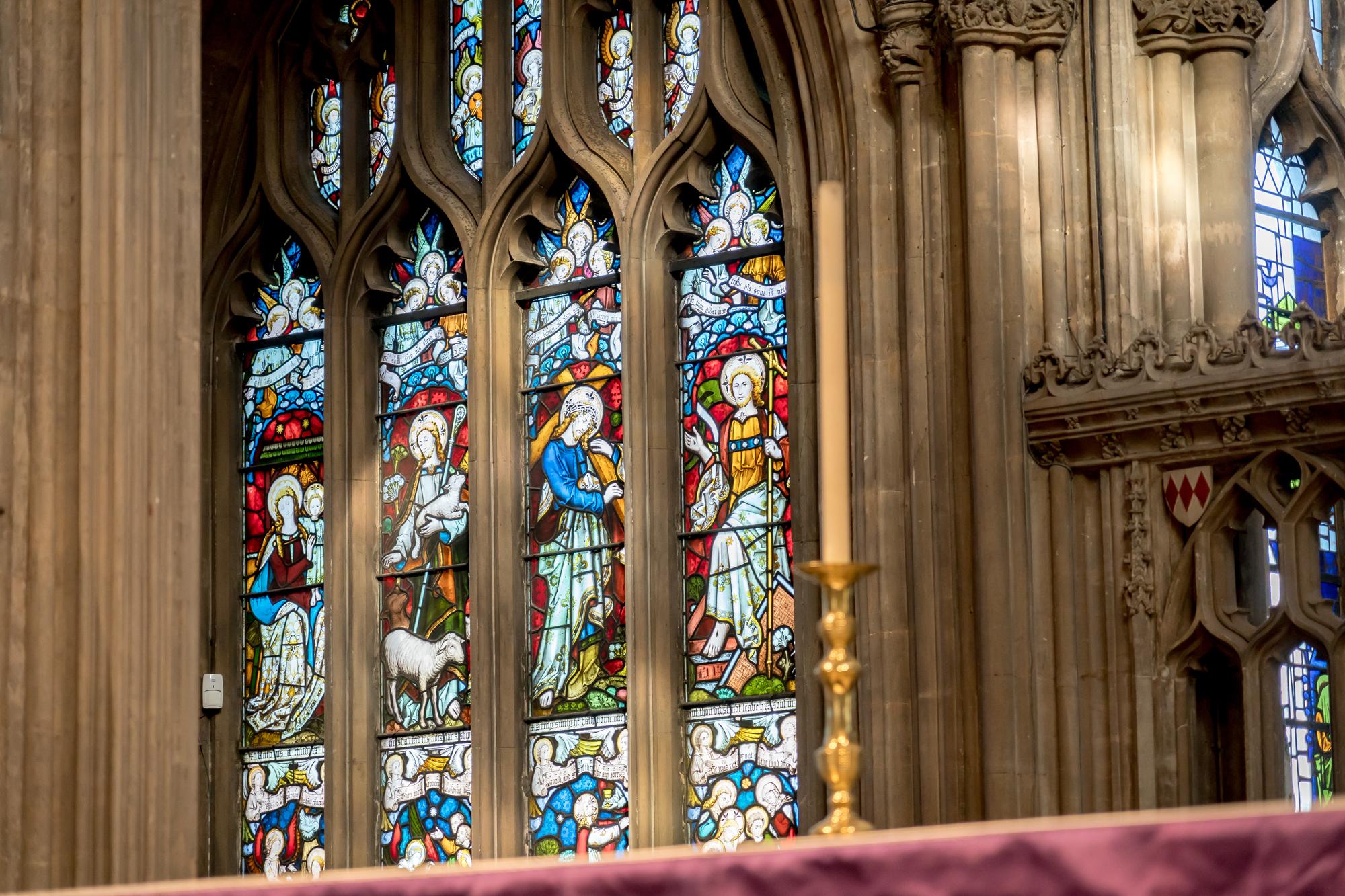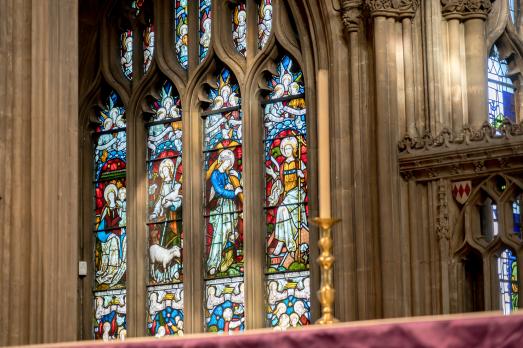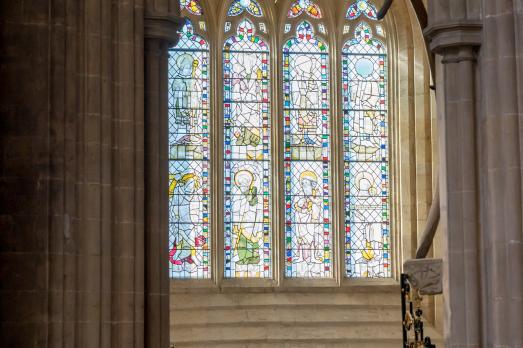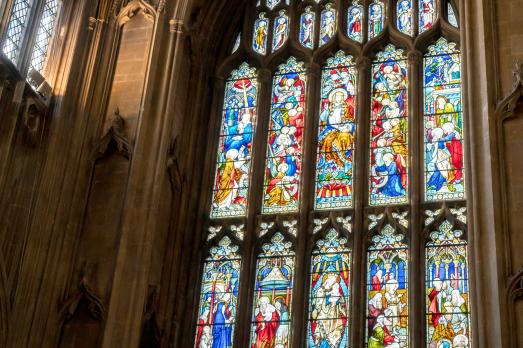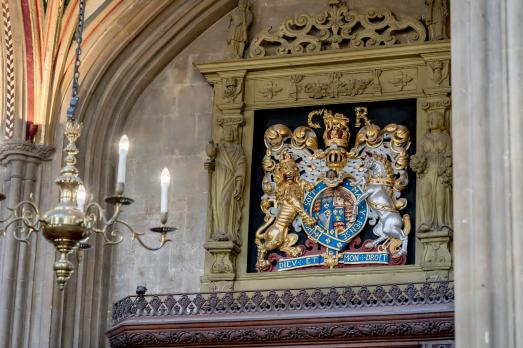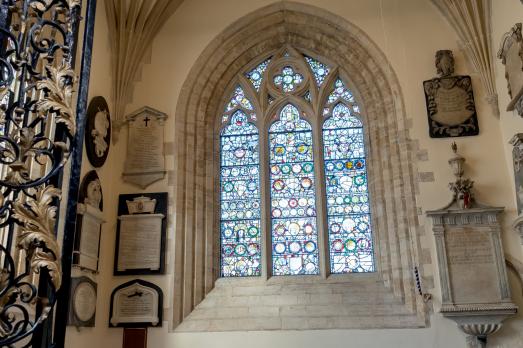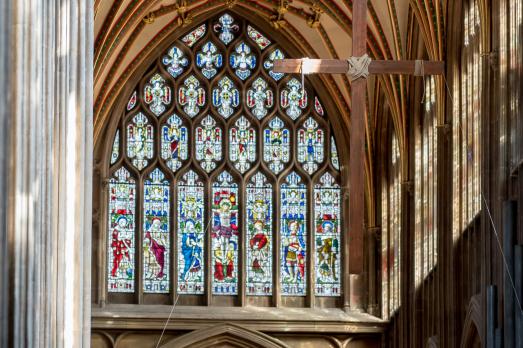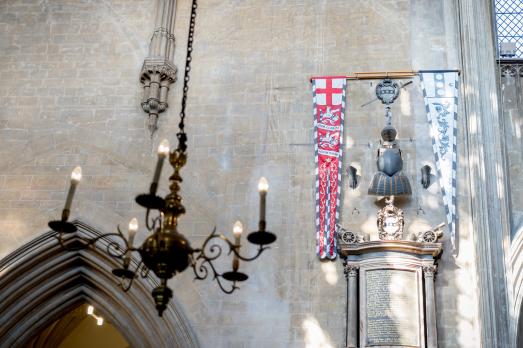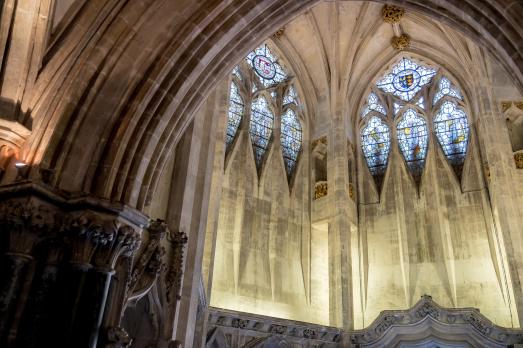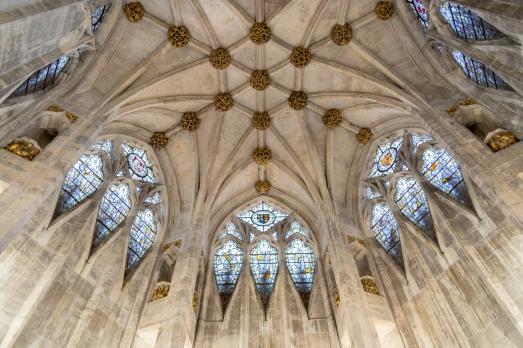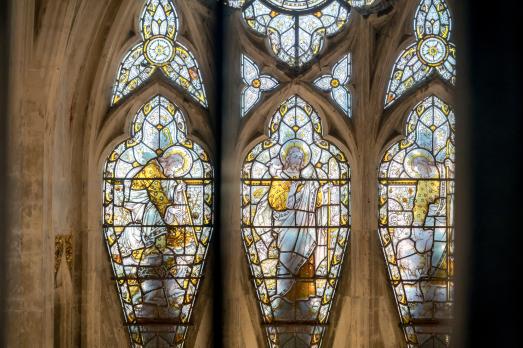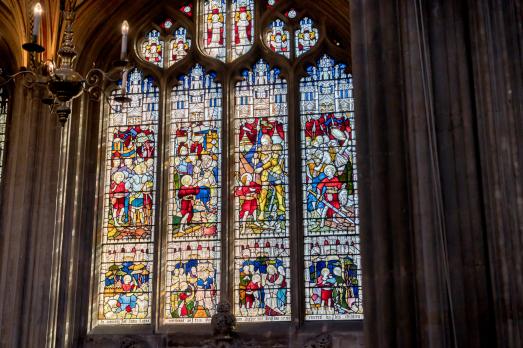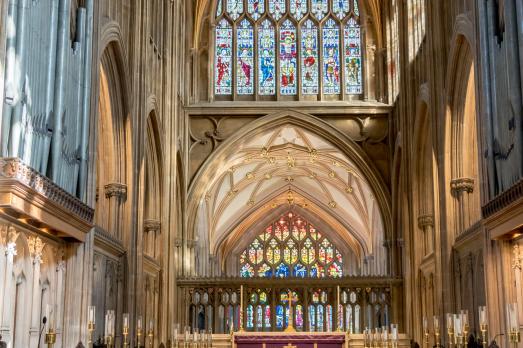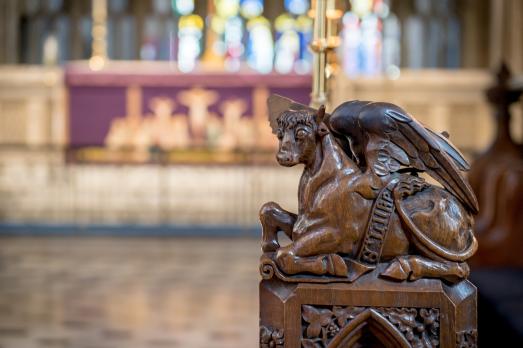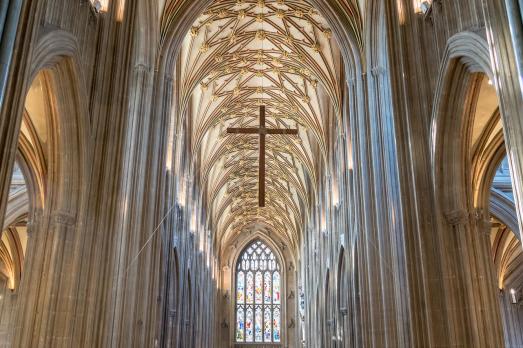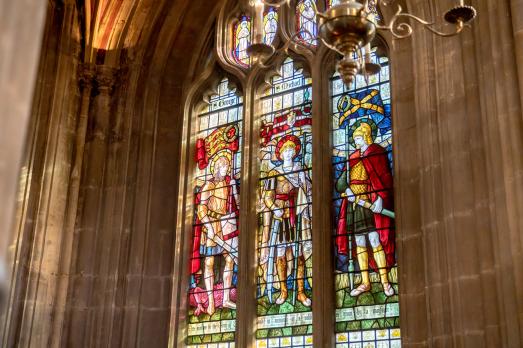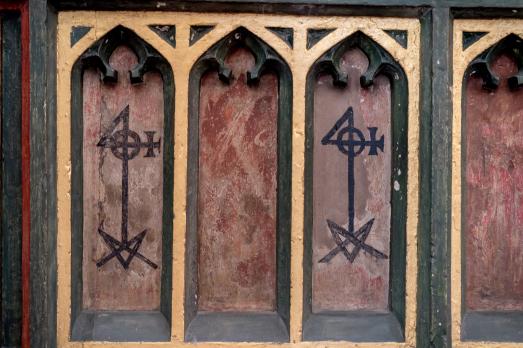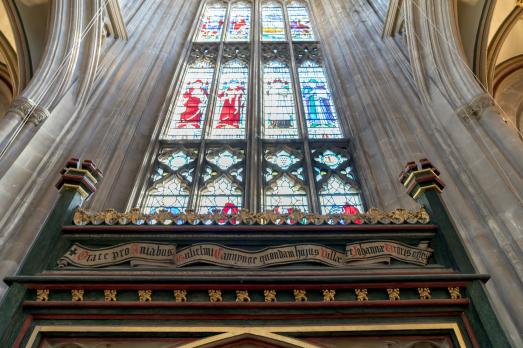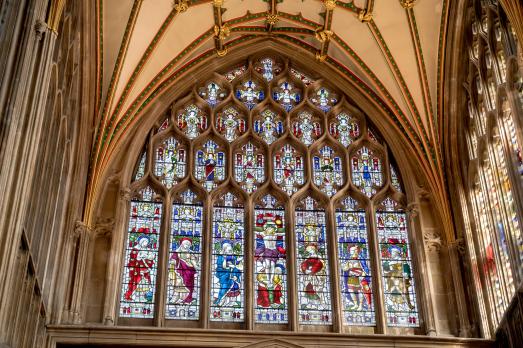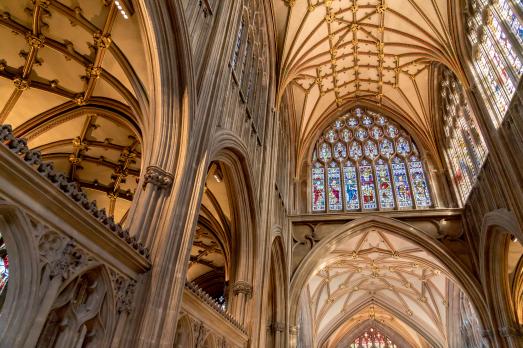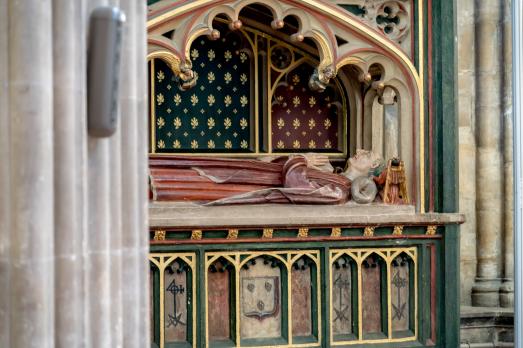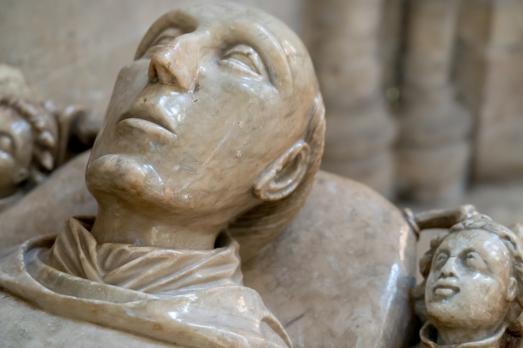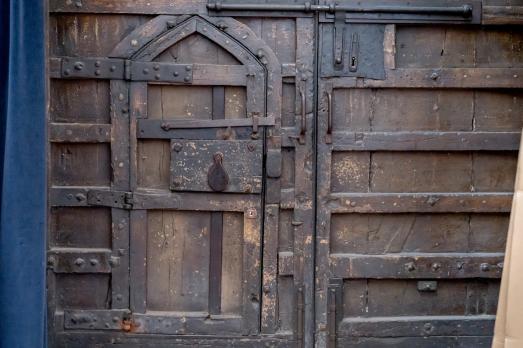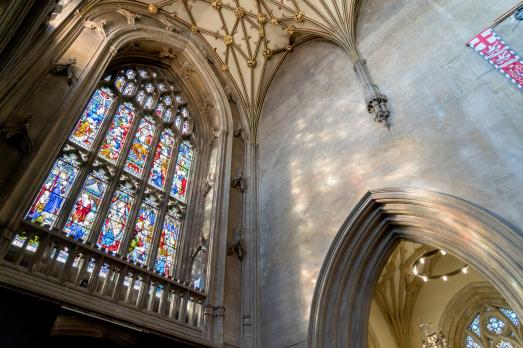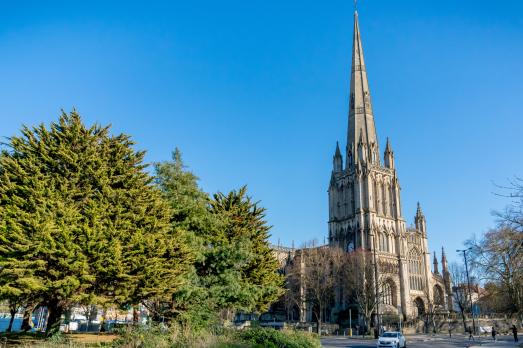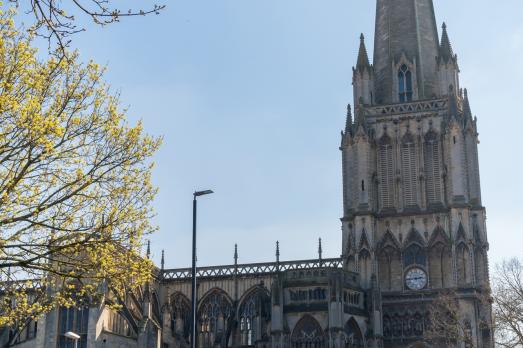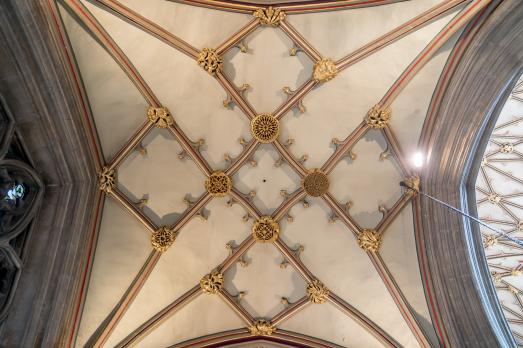The original quayside was just across the road, below the red sandstone cliff from which this area gets its name.
The present church is a treasure of international importance, a Grade I listed building that is a masterpiece of Gothic architecture.
'The fairest, goodliest, and most famous parish church in England’, Queen Elizabeth I 1574
The first church was built in the early 12th century, beside the medieval Portwall. During the medieval period the area became prosperous as the home of merchants who moved outside the walls of Bristol to avoid high taxation.
One of these merchants was William Canynges the Younger (1399-1474), whose tomb and effigy lie in the south transept. The elaborate tomb demonstrates a successful, wealthy man, whilst the effigy is of plain alabaster in priestly robes. The scale and brilliance of this church are largely due to him.
One of the most impressive features of St Mary is the superb, vaulted north porch. The inner porch is from about 1185, the outer section was added around 1325. Another glory is the nave ceiling, which boasts 1200 beautifully carved and gilded bosses, including England’s only carved medieval labyrinth. Magnificent medieval carvings are everywhere, including a series of amusing gargoyles. The oldest glass here is 14th century, whilst the magnificent Lady Chapel windows date from the 1960s.
St Mary’s is more than stunning architecture though.
In 1497 John Cabot and his crew set out from Bristol in the little wooden ship ‘The Matthew’. They discovered Newfoundland, the North American continent, and rich cod fishing grounds. This adventure is celebrated by a whalebone, brought back by Cabot, a fine model of the Matthew and a stained glass window.
Admiral William Penn is buried in the south aisle, while his armour, coat of arms and crest are displayed high on the wall. Admiral Penn loaned large sums to King Charles II but the King could not repay the loan to Penn’s son. Instead, he offered the younger Penn land in America, provided that it would be named after the late Admiral. Thus the state of Pennsylvania came into being.
As one of the early supporters of colonial unification, the younger William Penn wrote and urged for a union of all the English colonies into the United States of America. His democratic principles served as inspiration for the United States Constitution.

